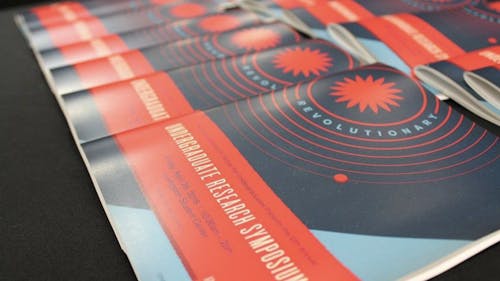Rutgers students create undergraduate research journal

Two Rutgers undergraduate students are launching the Aresty Rutgers Undergraduate Research Journal (RURJ) this month to showcase the work of Rutgers students across disciplines.
Prachi Srivastava and Frederric Kelada, two School of Arts and Sciences seniors, first became interested in creating an undergraduate research journal in 2018 after realizing there were limited options for getting undergraduate research published.
“I was looking into publishing neuroscience research, and so we noticed some journals that were catered toward humanities research and very specific subfields, and we found some other research journals as well that possibly could have taken us but they weren't super well-established,” Srivastava said.
The pair decided to establish the journal under the umbrella of the Aresty Research Center because the organization is already focused on undergraduate research at Rutgers, Srivastava said.
Kelada said the journal is unique because it exclusively accepts work from Rutgers undergraduate students, while most publications feature work from other schools.
“We're trying to showcase, ‘hey, this is what's going on at Rutgers,’” Kelada said. “It would really do (the University) a service to have that kind of opportunity to showcase what we're about.”
The initial issue of the journal, which is set to come out this month, will feature seven papers, with an additional seven being released slightly later, Srivastava said. After that, the journal will run on an annual publishing schedule.
Each year, undergraduates have the opportunity to submit their research by Dec. 31 for the following year's issue, Kelada said. From there, the papers will be selected and reviewed during the spring and summer, with the complete issue to be released in late summer or early fall, Srivastava said.
The peer review process begins with trained undergraduate students who suggest initial edits to the author, Srivastava said. After that, the paper is reviewed by a graduate student and a faculty member who provide extensive feedback, especially in regard to scientific or technical details. After the author makes the appropriate revisions, the paper undergoes copy editing.
Srivastava said the paper can be rejected at any point during the peer review process.
In order to become an undergraduate peer reviewer, students must apply for a position in the summer and have some research or other relevant experience. Srivastava said the program has a thorough vetting process and can only take a small number of applicants.
Once selected, students must take a 13-week course in the fall semester taught by experienced undergraduates known as senior peer reviewers, Kelada said. After completing the course, the students work on reviewing papers in the spring semester.
Kelada said the senior peer reviewers are also charged with updating the curriculum each year based on student and faculty feedback.
“We're very malleable because we realize that everything was done by undergraduates, so we’re very humble in that way,” Kelada said. “We're very ready to accept that maybe we didn't nail something the first time so we're always looking for feedback and looking to improve.”
To become a copy editor, students can apply in the winter, train in the spring and begin working in the summer, Kelada said.
In addition to reviewers, Kelada said the Aresty RURJ also has an executive board consisting of the editor-in-chief, the reviewer program coordinator, who oversees the selection and training process for peer reviewers, the outreach coodinator, who helps ensure the articles reach the appropriate people for revisions, the chief copy editor and the creative director, who works on developing logos and website design.
Kelada said the Aresty RURJ is a unique opportunity for both authors and peer reviewers that can help prepare them for graduate school or other endeavors after college.
“Typically, you don't get to see the side of publication or submitting to journals as an undergraduate,” Kelada said. “So being part of that reviewing process is a very novel thing that undergraduates, otherwise, don't typically get exposed to.”



